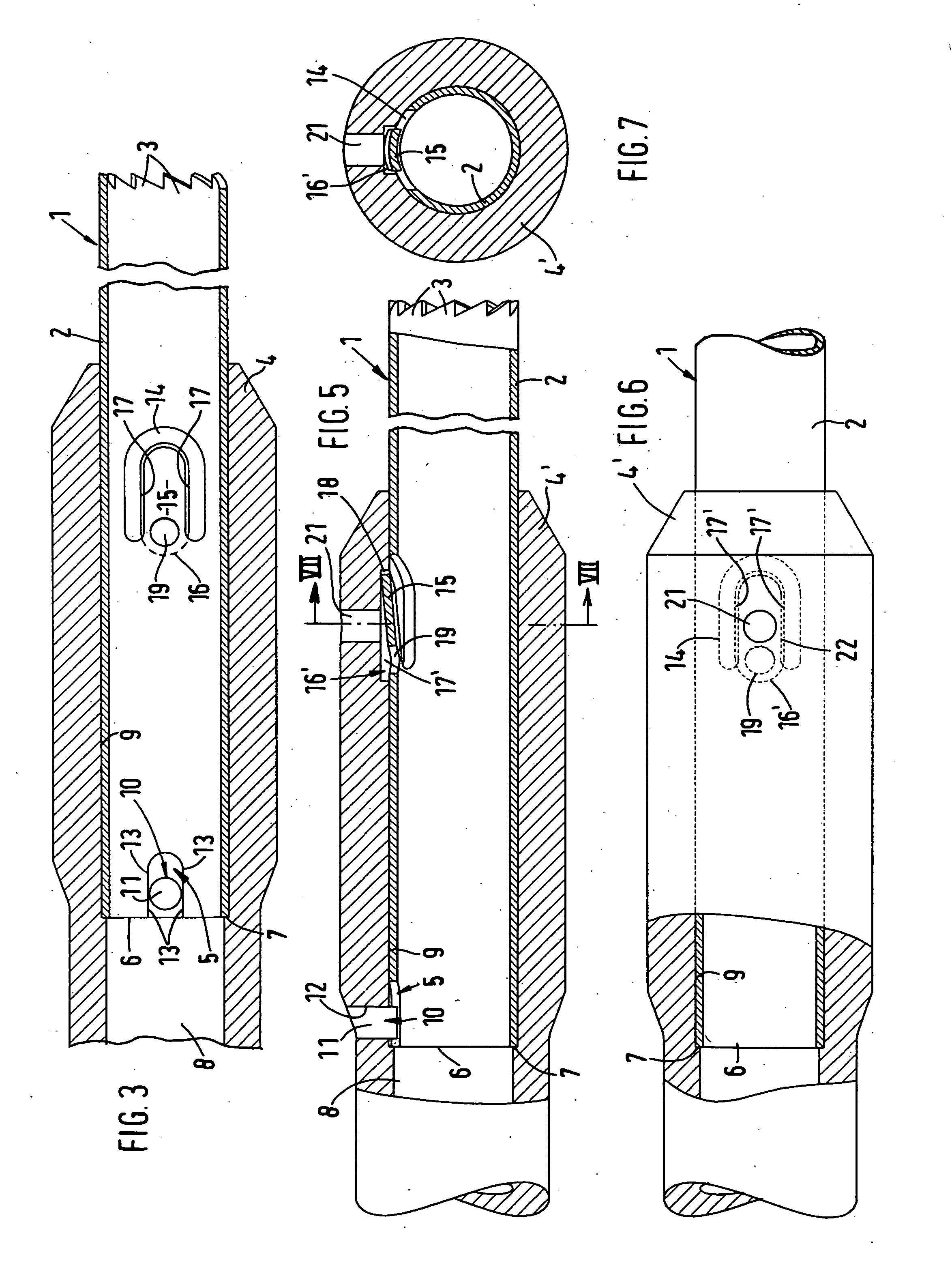Tool for making drill-holes in bones or removing cylindrical drill-hole cores from bones of the human body
a technology for bones and tools, applied in the direction of turning apparatuses, medical science, sleeve/socket joints, etc., can solve the problem of no longer being fixed axially in the tool holder, and achieve the effect of facilitating the pushing-on of u-shaped cuts and reducing cross-sectional area
- Summary
- Abstract
- Description
- Claims
- Application Information
AI Technical Summary
Benefits of technology
Problems solved by technology
Method used
Image
Examples
Embodiment Construction
[0021]Reference is firstly made to FIGS. 1 to 4. As can be seen therefrom, the tool generally denoted by reference numeral 1 consists of a thin-walled tubular tool body 2 made of steel, which is provided with cutting or grinding elements 3 at its outer end. In the example shown, these are teeth-like cutting elements. The tool body 2 is inserted axially into a likewise tubular tool holder 4, which tightly surrounds the tool body 2 but allows displacement movements of the tool body 2 during insertion into the tool holder and removal from the tool holder. The tool holder 4, which is shown broken off at its inner end, can be connected to a drive device (not shown) for driving the tool holder 4 and thus the tool 1 in rotation.
[0022]Provided at the inner end of the tool body 2 is a cutout 5 which passes through the wall thickness of the tool body 2 and extends as far as the end face 6 of the tool body 2, i.e. is open towards this side. When the tool body is fully inserted, this end face 6...
PUM
 Login to View More
Login to View More Abstract
Description
Claims
Application Information
 Login to View More
Login to View More - R&D
- Intellectual Property
- Life Sciences
- Materials
- Tech Scout
- Unparalleled Data Quality
- Higher Quality Content
- 60% Fewer Hallucinations
Browse by: Latest US Patents, China's latest patents, Technical Efficacy Thesaurus, Application Domain, Technology Topic, Popular Technical Reports.
© 2025 PatSnap. All rights reserved.Legal|Privacy policy|Modern Slavery Act Transparency Statement|Sitemap|About US| Contact US: help@patsnap.com



